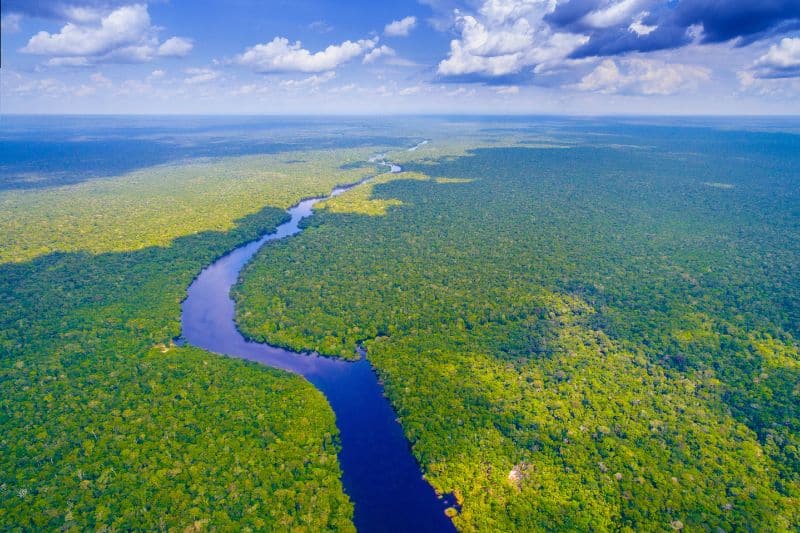The Amazon Forest is the biggest rainforest in the world, covering nine countries with 5,500,000 km2 of forest cover. In fact, it’s so vast that it’s even bigger than all the other rainforests combined.
The rainforest is home to more than thousands of species of animals, plants, and trees, making it the most biodiverse rainforest on the planet.
The Amazon Jungle, as it is called, is located in the South American continent and has the Amazon basin acting as the source of the magnificent Amazon River.
This article seeks to highlight the qualities of this forest with regard to its location, climate, ecosystem, plants, animals, deforestation, and precipitation.
At first, I thought I was fighting to save rubber trees, then I thought I was fighting to save the Amazon rainforest. Now I realize I am fighting for humanity.
~ Chico Mendes, Brazilian Environmentalist
Location
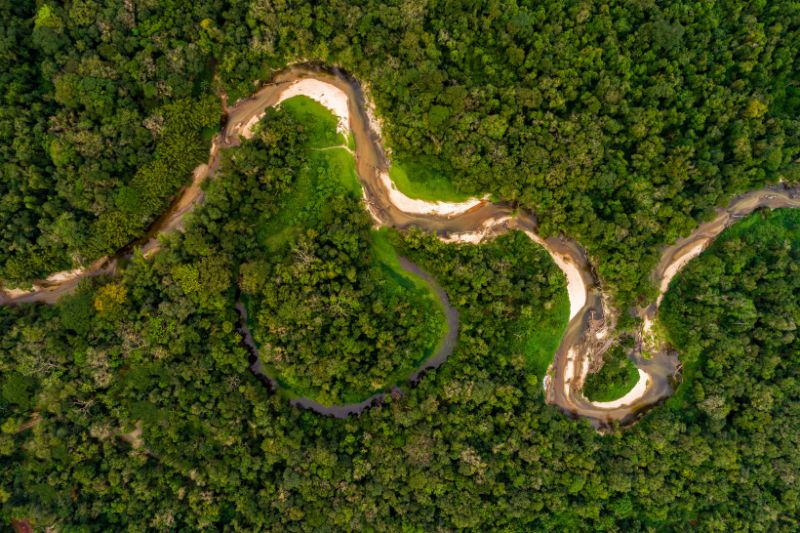
The rainforest is located in South America, stretching a brilliant 5,500,000 km2. The Amazon basin, which houses the forest, is slightly bigger, covering over 7,000,000 km2. The basin is the area that drains into the Amazon River, meaning that the water from the basin eventually enters the Amazon River.
With such a large stretch of forest cover, the Amazon rainforest is found in nine countries of the South American continent. These include Brazil, which boasts 60% of the rainforest, Peru with a forest cover of 13%, Colombia with 10%, and the remaining 17% divided between Venezuela, Ecuador, Bolivia, Guyana, Suriname, and French Guiana – an overseas territory of France.
It is located between the Tropic of Cancer in the North and the Tropic of Capricorn to the South, with the Equator, an imaginary line passing between them, making it a ‘tropical’ rainforest. The area between the two imaginary lines is known as the Tropics and thus the name Tropical rainforest.
Climate
The tropical rainforest experiences a humid season throughout the year. In the Amazon forest, there are no periodic seasons such as summer, winter, autumn, and spring by virtue of the tropics. All the land and vegetation between the tropics do not experience these seasons.
Instead, the rainforest experiences fairly hot temperatures of 26-30oC throughout the year. This is attributed to the imaginary Equator line, which influences a consistency in the day-long with 12 hours of sunlight all year round.
Consequently, there is a constant supply of sunlight, which is a key component in photosynthesis, powering up the rainforest all year round.
Generally, it is this phenomenon that maintains a warm temperature from a low of 22oC to a high of 34oC in the tropics. Nevertheless, the forest is mostly damp from the constant humidity levels.
Due to the presence of a large forest cover with over 390 billion individual trees, the air feels both stuffy and humid, making venturing into the forest a bit cumbersome.
Ecosystem
Amazon rainforest has the biggest ecosystem in the world. This ecosystem is driven by the great Amazon River, which covers thousands of miles and is the main foundation of the ecosystem. The river basin, with an average temperature of 26o C and heavy humid and rainfall levels, directly impacts the ecosystem.
This hot and humid climate has influenced the presence of different species of plants and animals, making the rainforest have the largest number of species for the kingdoms Animalia and Plantae, including many endangered species. Further, it is home not only to wildlife but also to indigenous people who have been living in the forest.
The rainforest’s ecosystem is so big that it helps control the entire planet’s atmospheric carbon levels. This is attributed to the Amazon basin, which is home to over ten times the annual carbon emissions from fuel consumption.
In addition to this, the forest stabilizes the various types of soils that enhance optimal crop production in the neighboring regions. Also, the rainforest helps to maintain the water cycle through transpiration, benefitting farmers miles away from the forest. By contributing high moisture levels into the atmosphere, the prevalence of droughts is reduced.
Still, this rainforest reduces water run-off, thus preventing the occurrence of floods. This is made possible by the stabilization of the soils as well as the anchorage of roots of the billions of trees in the forest.
The forest also influences the pattern of rainfall such that areas that are thousands of miles away from the basin can receive adequate rainfall throughout the year.
Plants
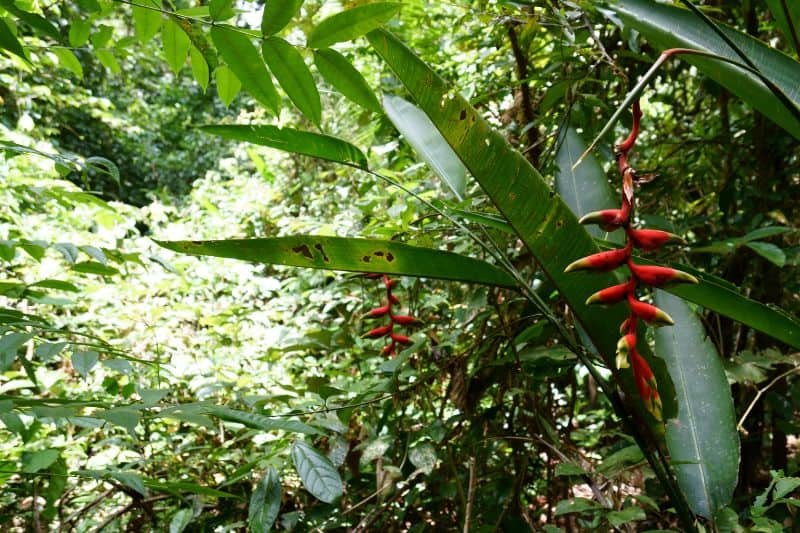
The Amazon biome is home to as many as 80,000 plant species in the Amazon. Interestingly enough, only a small percentage of these have been studied, with room for a lot of research and discovery. Therefore, further research might find more plants and trees with medicinal value that can be incorporated into the already available herbal medicines.
The tropical climate of the Amazon is the biggest contributing factor for the vast types of plants. The varying climate ensures that all types of plants can grow during the different seasons and can be boosted by the presence of canopies.
The canopy structure of the rainforest offers sources of food, moisture, and atmospheric regulation in the rainforest, essential for the proper growth of plants.
Because Amazon also has the largest number of indigenous forest people in the world, their knowledge of the medicinal plants yet to be discovered by modern researchers is potentially unrivaled. With the proper conservation of these plant species, a lot of current problems in terms of health and food can be uncovered.
Animals
The Amazon is home to over 2,000 different animal species. There are over 427 mammal species, 1,300 bird species, 427 amphibian species, 3,000 fish species, and 378 reptile species. In addition to this, there are over 2 million insect species in the Amazon rainforest. One in five of the bird species lives only in this rainforest.
One thing that’s worth noting is that some animals are exclusively found in the Amazon. Some of these include reptiles like the anaconda and the Jesus lizard; mammals like the howler monkey, golden lion tamarin, jaguar, sloth, spider monkey, and the Amazon River dolphin; birds like the toucan and the scarlet macaw; and amphibians like the poison dart frog and the glass frog.
The presence of an incredibly wide array of wildlife has brought about a lot of exploration in the forests, and as an outcome, it serves as a major foreign exchange earner for the nine regions, especially for Brazil, Peru, Bolivia, and Ecuador. Many studies have been conducted in the regions due to the wildlife present.
There have also been lots of wildlife activity, namely the setting up of orphanages and animal centers, in a bid to observe the endangered species and give them special care to increase their count before being released back into the wild.
Deforestation
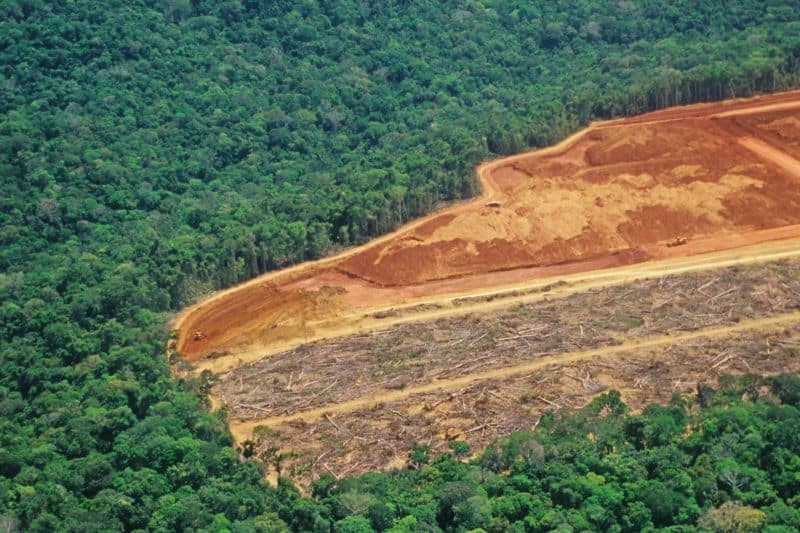
There has been a massive reduction of the Amazon forest area by residents in the nine regions. According to National Geographic, about 17 percent of the Amazonian rainforest has been destroyed over the past 50 years. The major reasons for this are human settlement and the search for agricultural land.
The land surrounding any river basin is always suitable for farming, given that it harbors suitable nutrient content and, thus, soil fertility. Similarly, the presence of forest cover translates into better soil quality in terms of humus and water retention, leaving no chance of soil erosion.
Although the soil in the forest is fertile, there is a deterring factor — the fertility of the soils in the Amazon is easily depleted over a short time, rendering farming on a single piece of land quite difficult. This is because the sandy soils are thin, thus unsuitable for farming.
Due to this, farmers keep seeking new areas in the forest to keep making a considerably good harvest, contributing to more deforestation and degradation. For this reason, the Amazon rainforest faces deforestation twice as much as other rainforests.
The formerly forested land that has been abandoned after soil degradation becomes grazing lands for cattle, with their growing population demanding even more grazing lands.
Brazil has the lion’s share of the rainforest. This has aided it in becoming one of the best world producers of soya beans, influenced by the amount of rainfall and humidity the forest basin provides.
However, the increasing demand for yield per hectare of soya has dramatically resulted in forest encroachment and deforestation. 20% of the Amazon biome has already been lost due to deforestation. According to WWF, by 2030, about 27% (more than a quarter) of the Amazon biome will have no trees if the current rate of deforestation persists.
Precipitation
Rainforests, as the name suggests, are rainmakers. Tropical rainforests lie in a zone with intense solar energy, which brings about air convection, thus losing moisture to the atmosphere, which is one of the factors that lead to frequent and heavy downpours.
The rainfall in the Amazon rainforest ranges from as low as 2,000 mm to as high as 10,920 mm annually. Such rainfall is optimal for the growth of high-end cash crops such as soybeans.
Also, due to the lack of the four major seasons experienced away from the tropics, rainfall is present all year round but may differ in intensity. In some circumstances, there are seasons that are characterized by light rainfall (short rainfall) or heavy rainfall (long rainfall).
Nevertheless, the southern part of the Amazon is worst hit by fluctuations in rainfall due to deforestation, which has led to the desertification of the area.
The Changing Nature of the Amazon
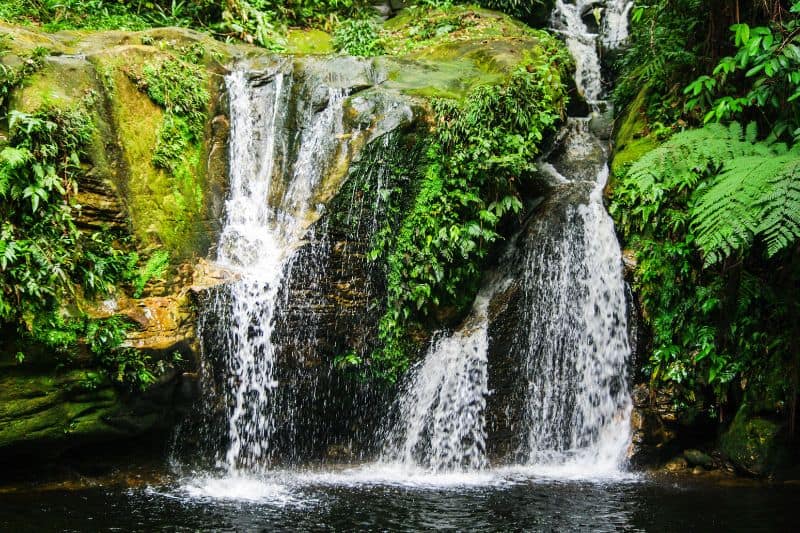
Amazon’s hydrological engine plays a major role in maintaining the global and regional climate. Water released by plants into the atmosphere through evapotranspiration (evaporation and plant transpiration) and to the ocean by the rivers influences world climate and the circulation of ocean currents. This works as a feedback mechanism, as the process also sustains the regional climate on which it depends.
Over time, global climate change and more deforestation will likely lead to increased temperatures and changing rain patterns in the Amazon, which will undoubtedly affect the region’s forests, water availability, biodiversity, agriculture, and human health. There are three factors that are causing changes in the Amazon rainforest.
One factor is the El Niño Southern Oscillation (ENSO), a climatic phenomenon that influences much of the climatic variability in Latin America. Although ENSO events are a natural occurrence, human-induced climate change is expected to increase their frequency in the future.
Second is ENSO, which is associated with dry conditions in northeast Brazil, the northern Amazon, the Peruvian-Bolivian Altiplano, and the Pacific coast of Central America. Meanwhile, southern Brazil and northwestern Peru have exhibited unusually wet conditions during ENSO events.
The third factor is deforestation, which, in addition to removing forest cover, causes a dramatic change in rainfall patterns and distribution. These findings imply that current deforestation in the Amazon has already altered the regional climate. They also support previous reports of increased shallow cloudiness over deforested areas.
The Long-term Weather Forecast for the Amazon
Models suggest that by the year 2050, temperatures in the Amazon will increase by 2–3°C. At the same time, a decrease in rainfall during dry months will lead to widespread drying. This could result in longer and perhaps more severe droughts, along with substantial changes in seasonality.
Research carried out under the auspices of INPE – Brazil’s National Space Research Institute shows that a warmer and drier environment for the region could convert from 30% up to 60% of the Amazon rainforest into a type of dry savanna.
As a result, we can expect the degradation of freshwater systems, loss of ecologically and agriculturally valuable soils, increased erosion, decreased agricultural yields, increased insect infestation, and spread of infectious diseases.
Reference:
